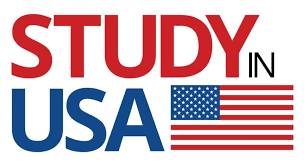Embarking on a journey to study in the United States is an exciting prospect for international students, but understanding the associated costs is crucial for effective planning. Beyond tuition and living expenses, the US student visa process involves various fees and expenditures. This guide breaks down the key financial considerations to help you budget for your study abroad adventure.
1. Student Visa Application Fee: $160
Initiate your visa journey by paying the non-refundable student visa application fee, applicable to F-1, M-1, and J-1 visas. This $160 fee must be settled before scheduling your visa interview and can be paid online, by phone, or in person at designated banks or service centers.
2. SEVIS Fee: $350 (F-1 and M-1), $220 (J-1)
The SEVIS fee, supporting the Student and Exchange Visitor Information System, is a mandatory payment of $350 for F-1 and M-1 visas, and $220 for J-1 visas. Pay this fee online, by mail, or through Western Union after receiving your Form I-20 or DS-2019 from your US school or program sponsor.
3. Visa Issuance Fee (Reciprocity Fee): Varies by Country
Depending on your country of citizenship and visa type, a reciprocity or visa issuance fee may apply. Check the Department of State website for reciprocity tables to determine if this fee is applicable to you. If required, settle the fee at the US Embassy or Consulate when receiving your visa.
Additional Expenses to Consider:
- Passport: Ensure your passport is valid for at least six months beyond your intended stay. Costs vary based on your country of origin and processing time.
- Photos: Budget for passport-style photos meeting visa requirements, considering potential variations in costs based on location.
- Transcripts and Diplomas: Provide official copies and translations if needed, incurring potential costs.
- English Language Proficiency Test: Budget for TOEFL or IELTS test fees based on location and chosen test center.
- Financial Documents: Prepare to cover costs associated with bank statements, tax returns, or other financial documents supporting your claims.
- Travel and Health Insurance: Arrange coverage for your trip and stay, factoring in costs based on coverage, duration, and chosen provider.
How To Apply For Student Visa In 2024?
Saving on Visa Expenses: Tips and Strategies
- Plan Ahead: Initiate the visa application process early to leverage discounts or fee waivers offered by some US schools or programs.
- Comparison Shopping: Compare costs and benefits across schools, programs, visa types, and insurance policies to make informed decisions.
- Seek Financial Aid: Explore scholarships, grants, loans, and part-time work or internship opportunities to alleviate financial burdens.
- Budget Wisely: Develop a realistic budget, exploring ways to reduce expenses such as shared accommodation, home-cooked meals, public transportation, and student discounts.
Conclusion: Making US Study Affordable and Enjoyable
While the financial aspects of obtaining a US student visa may seem challenging, strategic planning and resourcefulness can significantly ease the burden. By understanding the costs involved and implementing money-saving strategies, your educational journey in the United States can be both affordable and fulfilling.

